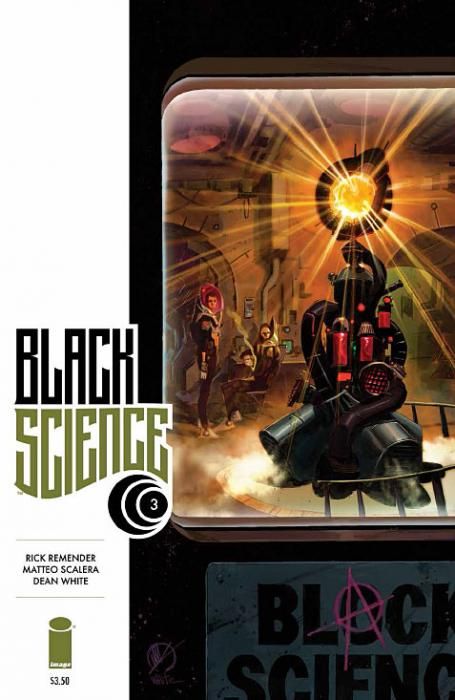Rick Remender and Matteo Scalera's "Black Science" is taking its time with the world-hopping. Rather than frenetically pacing the cast through a wide range of universes, Remender has them firmly trapped in this current world. Movement is reserved for the reader, who views alternating scenes from the past and the present that complement and build on each other. This structure continues to create a strong sense of consequence that doesn't let anyone off the hook for what they've done.
This is also much more of an ensemble book than I first expected. Because Remender is drawing out the conflict in this world so thoroughly, he has time to highlight the reactions of each member of the ensemble. While the reader still hasn't seen a character-building moment from the past for everyone, each member of the team has had to try and survive. It's a smart way to demonstrate character: by showing how they react to a crisis. Kadir in particular benefits from this approach. He's an obvious villain, scheming to steal Grant's lifework in the past, but he's also useful to the team on the battlefield. It's far more interesting to try and guess what a villain will do when he's dangerous, but not destructively so.
Ensemble aside, Issue #3 still follows Ward most closely. He reveals what's drawn him to Grant's anarchist league of scientists, and his narration gives the whole proceeding a more military, action-movie feel. He's a good choice of focal point for these issues set on a battlefield.
One of the things I most love about Remender's character work is that he isn't afraid to show his characters in contradicting positions. Rebecca, for example, is shown at both her most vulnerable and her most unstoppable in this issue. Rather than confusing her characterization, these scenes richen and broaden it. Grant, too, is at his most pleading and pathetic in one of the scenes from the past, so badly wanting his children to like him and to find his work interesting. In showing moments like this, Remender has so far resisted simplicity. Grant isn't simply an anti-authoritarian badass. He's also an old, lame dad.
The sense of movement in "Black Science" helps to maintain a quick, frenzied feel despite this character-heavy pace. The art moves ever forward, like an action movie, and Scalera's figures are forever changing position. Even when the team is huddled together in a rainy trench, he switches the panel perspective or zeroes in on a small gesture, so there is never a sense of standing still. White's colors add richness to Scalera's angular lines, so the battlefield scenes still feel appropriately muddy and dingy despite being painted in a complex palette.
My one big complaint is about political correctness, so if that isn't something you worry about, feel free to skip this paragraph. I liked the reverse Manifest Destiny concept when it emerged in Issue #2, since I felt it was done pretty tastefully. However, the creative team got a good deal less sensitive this issue, with the inclusion of scalping and the use of words like "shaman" and "medicine man" to describe a character who's clearly a highly advanced doctor. The narrating characters are supposed to be anarchist scientists who reject traditional authority and don't believe in the supernatural. Do they really not recognize a doctor (whose medical tech, by the way, is light years past their own) just because he looks Native American? It wasn't enough to ruin the whole issue, but it left a bad taste in my mouth.
All this aside, "Black Science" is shaping up to be a complicated, page-turning piece of work. It's a fine return to science fiction for Remender, and a wonderful example of how well comics can present the fantastic.

